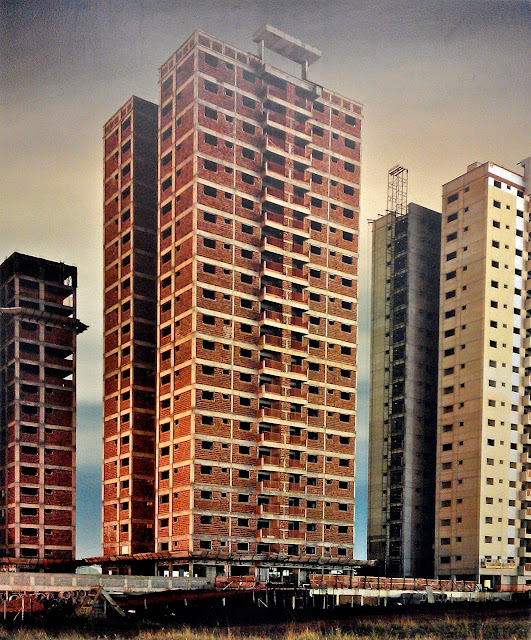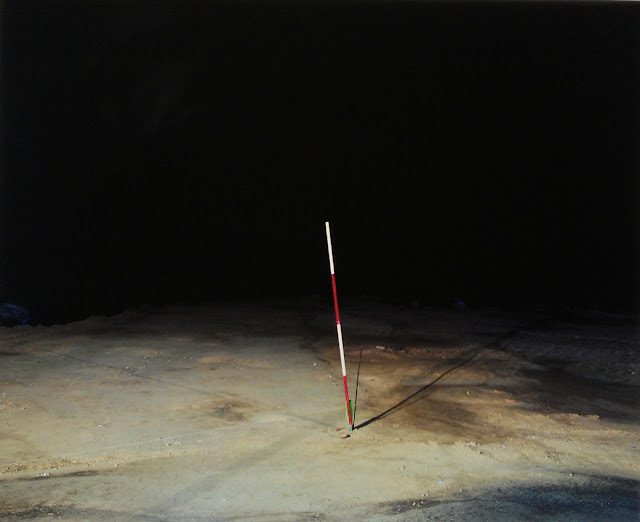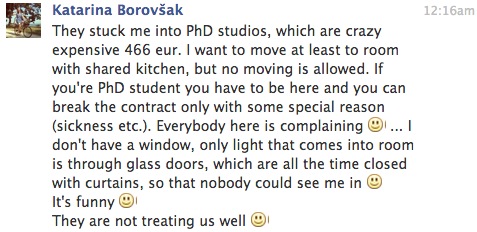 |
| A&Gallery Photo © Franky Verdickt |
Since I discovered Angels & Ghosts Gallery in Ghent, I follow their diverse activities. Aside from photo exhibitions, the gallery owners Wouter Van Vaerenbergh and Ben Van Alboom publish the newspapers Not Another Graphic Designer and The A&Gazette (already 4 editions). A month ago, Elisabeth Ouni was exhibiting 'A Polaroid Story', which I really liked. Now, A&Gallery hosts Franky Verdickt.
Franky Verdickt is a photographer based in Brussels, who graduated in 2007 with a Master in Photography (with honors) from the school of visual arts Sint Lukas Brussels. The same year, he traveled to Amsterdam to receive the prestigious Photo Academy Award. In July 2007, he joined Photolimits — a Belgian based platform for documentary photography. Five years of exhibitions in Beijing, Paris, Madrid and Copenhagen: Franky Verdickt is now exhibiting 'Totem' in A&Gallery, a project way more engaged than documentary photography!
 |
| Here we live. Photo © Franky Verdickt |
‘True, but I really can’t be bothered with labels. I like taking photographs – and that includes experimenting with different styles and techniques. I guess it’s like being able to speak more than one language. I’m sure some people are perfectly fine only speaking Dutch for the rest of their lives but I also like to communicate in French or English. I look at photography in the same way: one minute I’m shooting construction workers for a documentary project, the next I point my camera in a different direction to take a photograph for Totem. I feel it’s okay for a photographer to do that. In fact, I wish more photographers did. A lot of them are just tak- ing the same pictures over and over again – not even slightly embracing the possibilities photography has to offer but calling themselves artists nonetheless. Seriously, for photography to be art, you’re required to do something with it.’
Franky Verdickt
source: A&Gazette Vol. II, n.2
source: A&Gazette Vol. II, n.2
 |
| Real Estate Paradise. Photo © Franky Verdickt |
For his project, the photographer went to China, Egypt and Brazil over 3 years, pursuing his obsession with how people build homes:
‘I find it fascinating how our lives are so gravely effected by the place where we live yet a lot of people rely on big developers to build them a house or an apartment. Oh, but don’t worry: the brochure said the new place will be so you and I guess a lot of those houses and apartments actually do have everything a person requires. So how come they feel so cold and empty?Take the hutongs in Beijing per example: one day you’re living in a community where everybody knows your name, then the government forces you out of your home to build an enormous apartment building where you get to spend the rest of your life not knowing anybody. True, you got a new house — nice and clean; and let’s not forget there’s air-conditioning — but often there’s a huge difference between a house and a home.’
Franky Verdickt
source: A&Gazette Vol. II, n.2
 |
| The Pastoral Living. Photo © Franky Verdickt. |
Don't be mistaken then: a home is not a house.
Totem emphasizes a global reality today. Real estate businesses (both public and private) are throwing people our of their own homes, to put them in a new house. On the long-term, these new residential buildings are more expensive than their former homes because of multiple reasons (augmented services which the new residents never asked for). Eventually, they have to move out of their new house, leaving their spot for richer people.
Homeless in their house.
Who is responsible then: the governments? the real estate agencies?
 |
| Totem. Photo © Franky Verdickt. |
All exhibited prints are for sale; signed and numbered by Franky Verdickt.
- See A&Gallery staff for more information or send an email to email(at)angels-ghosts.com.
From November 8th until 24th, 2012 (11am - 6pm) at Schepenhuisstraat 17, 9000 Ghent.- See A&Gallery staff for more information or send an email to email(at)angels-ghosts.com.












.png)












